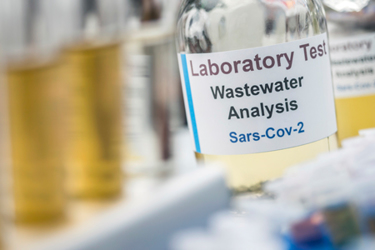State-Of-The-Art Wastewater Analysis Systems Will Be Key To Guarding Public Health In The Future
By Ari Goldfarb

Wastewater is suddenly an important source for data and insight for solving problems beyond the scope of traditional water management.
COVID-19 unleashed the worst public health crisis of our lifetimes, but it also revealed some of our strongest heroes and assets.
Much-deserved praise has gone to healthcare workers, vaccine scientists, and the supply chain employees who helped the world operate through the coronavirus lockdown.
But one powerful aid has attracted far less attention. It is the key piece of infrastructure that has helped to detect, track down, and prepare for the next outbreak of the deadly virus. What’s more, it could play a vital role in preventing such a crisis from happening again.
Sewers: Our Secret Weapon
Though wastewater infrastructure has traditionally been invisible — we usually don’t think about it because it just works — utilities have turned it into a key tool to combat the pandemic. New technologies have allowed utility workers and scientists to map and predict the spread of COVID-19 across more than 50 countries, 200 universities, and 1,000 locations, all through advanced wastewater analytics.
Engineers and public health scientists have concluded advanced wastewater technology can help protect us from the next contagion as well as keep track of other serious public health concerns. The technology already is being used to track down and stop industrial polluters, drug traffickers, and environmental disasters in rivers and oceans.
It all points to the urgent need to upgrade wastewater testing and analysis systems with state-of-the-art technology. This upgrade needs to be a top priority for policymakers to make spending decisions as part of the $1.2 trillion infrastructure legislation recently signed into law by President Biden.
Tech achievements with wastewater during the coronavirus pandemic have been remarkable.
One automated wastewater testing system found nearly 85 percent of all COVID cases on a San Diego college campus. The technology was powerful enough to detect a single infected, asymptomatic person in a dorm — up to three days before individual testing could yield clear results.
An airline used wastewater testing to find COVID in passengers on international flights arriving in Dubai. Early-warning systems via wastewater also helped detect numerous asymptomatic cases in Hong Kong. In Florida, health researchers say wastewater monitoring has revealed COVID surges in prisons and nursing homes four to six days before any uptick in case reports or hospitalizations.
There’s a good argument that the use of wastewater-based epidemiology, or WBE, provides the most accurate picture of a community’s COVID status.
About 30 percent of all people with COVID are asymptomatic and typically not tested. They can spread the sickness without knowing it.
Though many people don’t get tested, they all go to the bathroom. In wastewater, engineers can track COVID from both symptomatic and asymptomatic people.
As an early warning tool, wastewater-based epidemiology has helped public health officials isolate the infected and prepare hospitals for surges of sick hospital patients by stocking up on medicines and ventilators.
Wastewater Surveillance Beyond COVID
In Israel, health officials found and contained an outbreak of polio in 2013-2014 via wastewater monitoring. By investigating the molecular composition of the virus found in local sewage, scientists concluded that the virus came from Pakistan, then spread into Israel, Egypt, and Syria.
Years before coronavirus, scientists learned from wastewater in the Middle East a crucial public health lesson: even the most heavily protected political borders are open to the spread of disease.
Law enforcement has also taken notice of the revealing details in wastewater. Scientists in the U.S., Belgium, Germany, the Netherlands, and Spain have monitored sewage to track the use of illegal drugs, including opioids, cocaine, and methamphetamines. In China, officials used wastewater analysis to track down and arrest drug manufacturers.
By monitoring drug levels in wastewater, Chinese officials concluded that methamphetamine use dropped by 42 percent and ketamine use decreased by 67 percent after major law enforcement crackdowns.
Adding smart technologies to wastewater treatment generally adds 2 to 5 percent to the overall price of infrastructure, but those investments more than pay for themselves through improved public health.
COVID wasn’t the first pandemic, and it won’t be the last. One lesson we should learn from this lockdown is that wastewater monitoring can help prevent and mitigate the next public health crisis.
 About The Author
About The Author
Ari Goldfarb is CEO of Kando, an Israel-based company providing data-driven wastewater management solutions to help cities worldwide keep rivers and oceans cleaner while stimulating the reuse of water.
